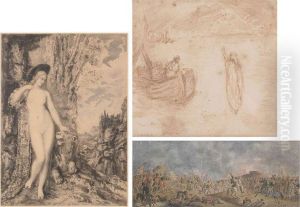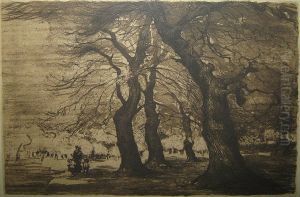Albert Delstanche Paintings
Albert Delstanche was a Belgian sculptor born on April 28, 1870, in Ixelles, Belgium. His artistic career spanned the late 19th and early 20th centuries, a period marked by significant changes in the art world, including the transition from traditional academic art to modernism.
Delstanche began his artistic education at the Académie Royale des Beaux-Arts in Brussels, where he studied under renowned Belgian sculptor Charles van der Stappen. This classical training provided him with a solid foundation in the techniques and principles of sculpture. Delstanche's early work was characterized by a strong adherence to naturalism and a focus on the human figure, themes that were common among many artists of his generation.
Throughout his career, Delstanche's work exhibited a sensitivity to material and form. He was particularly known for his skill in working with marble and bronze, materials that allowed him to capture both the strength and delicacy of the human body. His sculptures often depicted allegorical figures, mythological subjects, and portraits, and he was adept at conveying emotion and character through his representations.
Delstanche's work received recognition in his homeland and abroad. He participated in various exhibitions, including the Salon de la Société des Artistes Français in Paris, where he was awarded a gold medal in 1907 for his sculpture 'The Wave' ('La Vague'). He also contributed to the decorative program of several prominent buildings, such as the Palais de Justice in Brussels, showcasing his ability to work on both intimate and monumental scales.
In addition to his sculptural work, Delstanche was involved in teaching, passing on his skills and knowledge to the next generation of artists. He served as a professor at the Académie Royale des Beaux-Arts, the very institution where he had honed his craft.
Albert Delstanche's contributions to the field of sculpture were significant in his exploration of form, his technical proficiency, and his commitment to the traditional values of his art. He passed away on September 4, 1941, in Uccle, Belgium, leaving behind a legacy that would continue to influence Belgian sculpture and the broader art world for years to come.

